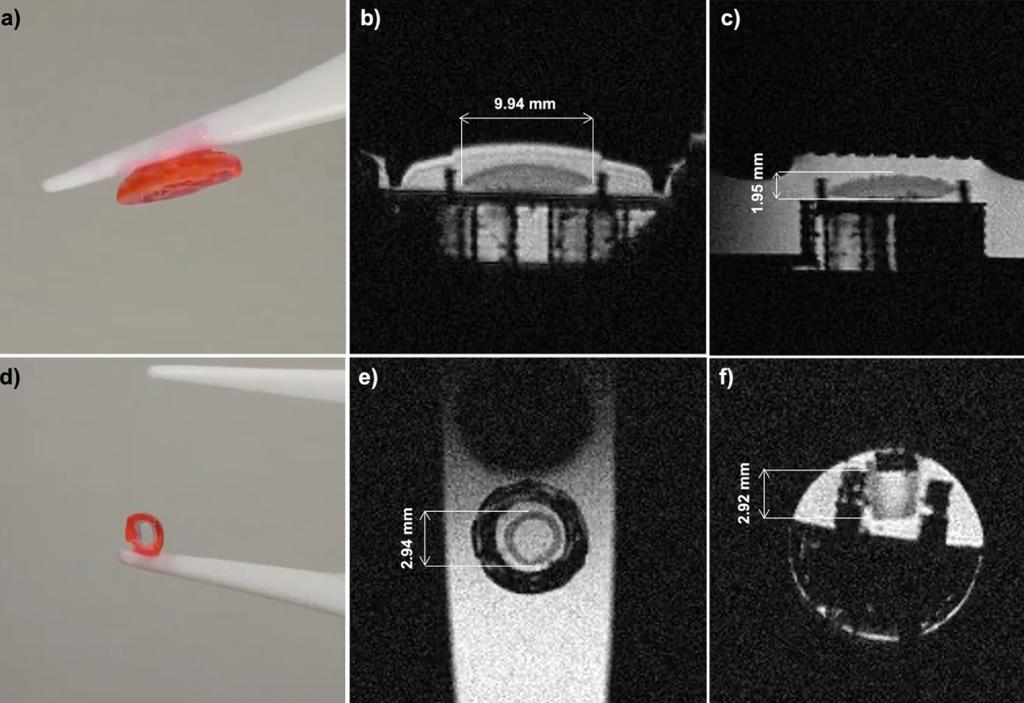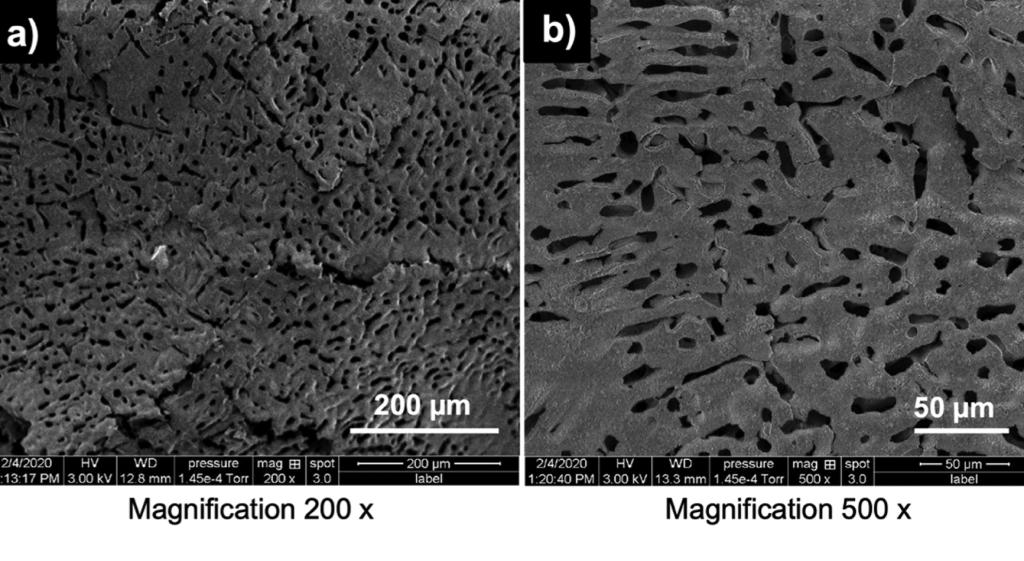
Researchers at Canada’s Laval University have come up with a novel 3D printed hydrogel that could be used to treat cervical cancer patients.
Composed of a thermosensitive polymer mixed with gold nanoparticles, the gel is designed to be applied locally to the vagina, from which it can carry drugs to the cervixes of female cancer patients. With further R&D, the team believe it possible to use scan data to tailor their hydrogel to the anatomies of specific patients, helping better treat the disease and optimize their post-tumor removal recovery.
“Nanoparticle-eluting hydrogel systems adapted to the specific anatomy of a patient could be developed for application at the cervix area affected by the malignancy or the tumor cavity after resection,” explain the team in their paper. “The design of these objects would be facilitated by MRI scans from patients, which could form the basis of the computer aided designs necessary for 3D printing.”
Better tackling cervical cancer
Despite a huge roll-out in vaccinations among developed countries, leading to a decline in overall cases, more than 300,000 women per year still die from cervical cancer according to World Health Organization figures. In light of this, the researchers say that vaccination cannot be the world’s “sole medical weapon” in the fight against the disease.
Given their efficacy in treating ailments such as bacterial, fungal or sexually transmitted infections, the team see topically-applied therapies as another potential way of fighting the cancer. Such gels, they theorize, could be especially effective in this area due to the the location of the cervix, which is easily accessible through the vagina, unlike other cancers that occur in deeper regions of the body.
However, when such cancer-fighting hydrogels have been developed before, they tend to have suffered from slow gelation, meaning that their drug payload seeps out before it can be absorbed into the vaginal wall. Another problem with previous gels is that the methods used to produce and administer them suffer from a high degree of variation, thus their properties have differed upon administration.
That being said, the Laval scientists maintain that gel-based 3D printing overcomes a lot of these drawbacks, and even enables the creation of custom medications which mimic the contours of cancerous areas. The team believes this could be particularly useful in meeting the needs of those with cervical scarring after tumor removal surgery, hence they’ve made 3D printing a cornerstone of their approach.
Introducing a new cancer therapy
To make their vision of personalized cervical cancer treatment a reality, the researchers started by formulating a hydrogel capable of better carrying drugs inside the body. This was achieved by mixing PF127, a synthetic polymer with phase-changing behaviors that make it ideal for high-resolution patterning and gelation, together with alginate, a natural substance that has strong mucoadhesion.
The team also loaded their gel with traces of gold, given that it’s often used as part of radiotherapy or photothermal procedures, treatments that alongside surgical resection or chemotherapy, could be capable of eliminating cancer cells.

Once they’d perfected their formula, the scientists went on to 3D print it into gel prototypes, before subjecting these to cytotoxicity and mucoadhesion testing. When exposed to the team’s hydrogels, cell assays demonstrated a viability of between 90 and 93%, confirming the absence of obvious cytotoxicity, while they also proved capable of absorbing 93 out of the 500μg of mucins in the solution.
Likewise, when it came to delivering gold nanoparticles, results showed that the gel was able to transfer up to 46.7% of them to a vaginal mucous membrane over 42 hours, although the rate of this diffusion did slow, with some remaining attached to their alginate matrix.
As a final step, in order to assess the customization potential of their hydrogel, the team then created a 10mm-wide scaffold, in the shape of a patch designed to cover a treated cervix. MRI scans of this prototype revealed that its shape had deviated just 0.5 and 0.75% in diameter and height from its design, reflecting the high level of accuracy it’s possible to achieve via the scientists’ approach.
Moving forwards, the researchers aim to apply their method in-vivo via studies with mouse models, as a means of more precisely tracking implant degradation. However, based on the results of their initial study, the Laval team believe their novel gel holds the potential to not only improve the efficacy of existing cervical cancer therapies, but to treat the tumor cavities left behind following related surgeries.
“To our knowledge, this study provides the first example of a 3D printing technology applied to the fabrication of a nanoparticle-eluting hydrogel delivery system for the treatment of cervical cancer,” conclude the team in their paper. “The very high geometrical compliance of the 3D printed objects as shown by MRI provides a strong proof of concept for the design of pre-clinical in-vivo experiments.”
AM in future cancer remedies
Whether it be in creating cancer-treating surgical devices or implants, additive manufacturing continues to be deployed in multiple different ways to improve the outcomes of affected patients. Just last month, surgeons at one of India’s Manipal Hospitals used a 3D printed titanium implant to carry out life-saving surgery on a patient, removing their cancer before reconstructing their sternum and ribs.
Scientists at the California Institute of Technology and UC San Francisco have also come up with 3D printed ‘Chemofilters,’ designed to direct chemotherapy drugs towards affected organs and away from healthy tissues. By injecting their creation into patients during treatment, the researchers say that it’s possible to drain affected organs, preventing any toxic agents from entering the bloodstream.
Elsewhere, on the 3D bioprinting front, 3D Systems has poured a significant amount of research into developing tissues for breast cancer survivors. When used alongside breast implants, these soft tissue structures are designed to support the lower breast and expand the implant pocket, increasing its overall coverage.
The researchers’ findings are detailed in their paper titled “A Three-Dimensional Printable Hydrogel Formulation for the Local Delivery of Therapeutic Nanoparticles to Cervical Cancer,” which was co-authored by Mariia Kiseleva, Mahmoud M. Omar, Élodie Boisselier, Svetlana V. Selivanova and Marc-André Fortin.
To stay up to date with the latest 3D printing news, don’t forget to subscribe to the 3D Printing Industry newsletter or follow us on Twitter or liking our page on Facebook.
For a deeper dive into additive manufacturing, you can now subscribe to our Youtube channel, featuring discussion, debriefs, and shots of 3D printing in-action.
Are you looking for a job in the additive manufacturing industry? Visit 3D Printing Jobs for a selection of roles in the industry.
Featured image shows photographs and MRI scans of a cervical cancer patch 3D printed by the team. Photo via Laval University.